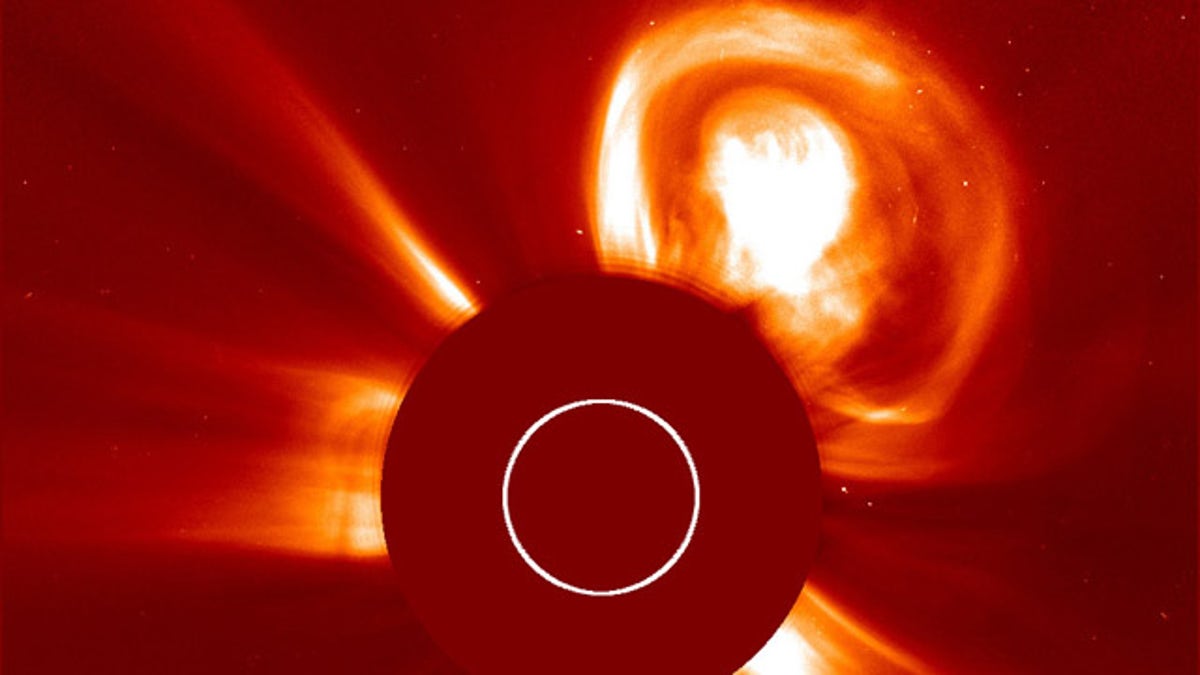
A gigantic solar eruption shoots out from the sun -- straight towards the Red Planet. (NASA)
The sun battered the Earth's magnetosphere with an "epic" geomagnetic storm over the last couple of days, generating beautiful auroral displays at low latitudes. Now it's Mars' turn.
On Saturday (Oct. 22), a large bubble of solar plasma was blasted from the sun's surface. Unlike the coronal mass ejection (CME) that struck us on Monday, Saturday's CME was sent in a different direction -- toward the Red Planet.
SCIENCE CHANNEL: Wonders of the Solar System: The Sun
As per simulations carried out by NASA's Goddard Space Weather Laboratory (shown below), the CME should have arrived in Mars orbit by now (Oct. 26). However, its impact on Mars will be very different than a CME's impact on Earth.
For starters, Mars doesn't have a protective global magnetic field -- instead it has a "patchy" magnetic field distributed all over the planet. One of the many problems future Mars explorers will face is the increased radiation environment on the Martian surface -- the lack of a protective magnetic "shield" and a thin atmosphere means CME impacts and solar flare events are a health risk.
PHOTOS: 5 Ways the Solar Wind Will Blow You Away
It is believed Mars suffered a cataclysmic impact event in its early history that damaged the planet's internal "dynamo." Therefore, its magnetosphere was shut down and any residual magnetic field acts as mini-magnetic "umbrellas."
It is thought that these magnetic umbrellas my be the root cause of the thin Martian atmosphere. As the solar wind continually buffets Mars, the magnetic umbrellas get "pinched off," carrying atmospheric gases into space. This might explain why the planet's atmosphere is 100 times thinner than Earth's.
NEWS: Martian Air Blown Away by Solar Super Wave
According to Spaceweather.com, there is circumstantial evidence from data collected by the NASA's Mars Global Surveyor (1996-2007) that suggests these magnetic umbrellas also generate their own aurorae when particles from the sun impact the Martian atmosphere.
Like the satellites in orbit around the Earth, the three satellites in orbit around Mars (NASA's Mars Reconnaissance Orbiter and Mars Odyssey, plus the European Mars Express) are vulnerable to damage by the sun's high-energy particles impacting their circuitry.
Fingers crossed this latest solar assault passes without incident.




















